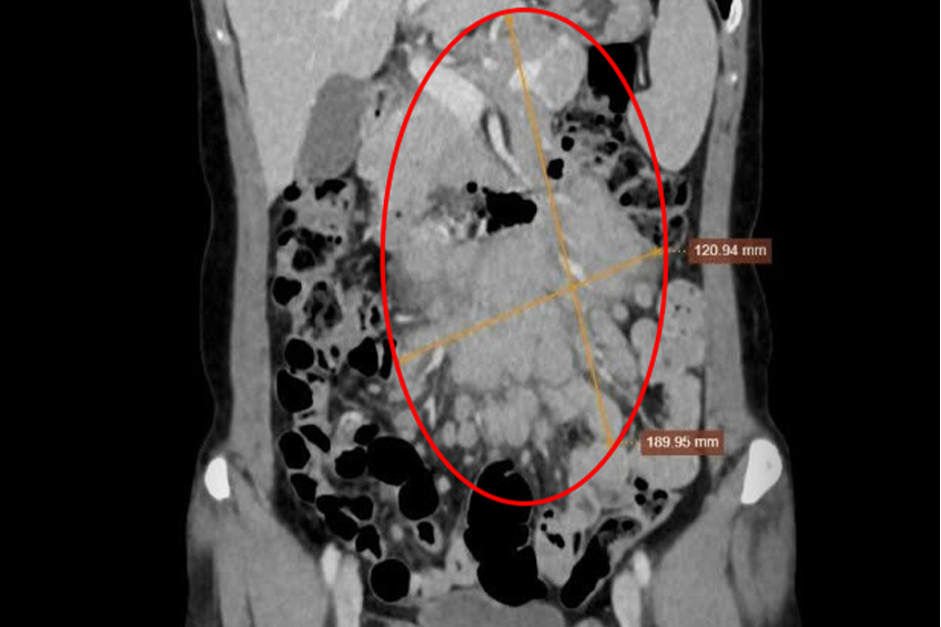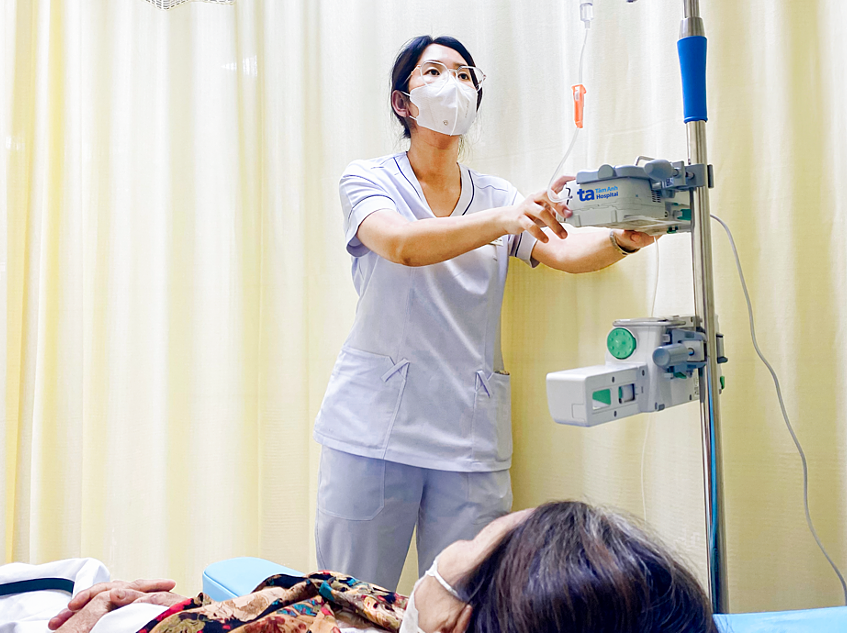"The lymph nodes have completely disappeared, and no new lesions have appeared," said Dr. Nguyen Tran Anh Thu, from the Oncology Department of Tam Anh General Hospital in Ho Chi Minh City, after Lien completed 6 cycles of chemotherapy. Throughout her treatment, Lien experienced no nausea, vomiting, or hair loss, maintaining good health and spirits.
Lien first noticed a lump on the left side of her neck in October of last year. Experiencing frequent abdominal pain recently, she sought treatment at Tam Anh General Hospital in Ho Chi Minh City. A CT scan revealed dozens of lymph nodes clustered together, measuring 12x19 cm, pressing against her intestines. A biopsy of the neck lymph node and bone marrow confirmed a diagnosis of stage 4 malignant lymphoma (lymphatic cancer).
 |
Lien's CT scan shows clusters of lymph nodes, ranging from tiny to large, in her abdomen. Photo: *Tam Anh General Hospital* |
Dr. Thu explained that the lesions were present in several areas, including the neck, abdomen, groin, and bone marrow, leading to a diagnosis of non-Hodgkin's lymphoma. This type of cancer is known for its poor prognosis and presents greater treatment challenges compared to Hodgkin's lymphoma.
Lien's bone marrow contained cancerous cells. Treating bone marrow can lead to side effects like low white blood cell count, anemia, and low platelet count, which can complicate the treatment process. Dr. Thu prescribed targeted therapy combined with targeted chemotherapy. The medication contains a transmembrane protein that binds to the CD20 receptor, helping the immune system identify and eliminate cancer cells effectively, with minimal impact on healthy tissue.
 |
An oncology nurse monitors Lien's IV treatment. Photo: *Tam Anh General Hospital* |
According to the Global Cancer Observatory (GlobocanN), Vietnam recorded approximately 4,000 cases of lymphatic cancer in 2022. Of those, over 3,500 were non-Hodgkin's lymphoma, resulting in more than 2,200 deaths.
Lymphoma, a cancer of the lymphatic system, occurs when lymphocyte cells grow uncontrollably. There are two main types: non-Hodgkin's lymphoma (accounting for about 90% of cases) and Hodgkin's lymphoma. Early detection often leads to successful management. However, late-stage diagnosis and treatment significantly increase the risk of death, according to Dr. Thu.
Several factors can increase the risk of lymphoma, including exposure to chemicals and pesticides, infections, chronic inflammation of lymphoid tissue, cytomegalovirus (CMV) infection, and hepatitis C. Individuals with weakened immune systems or autoimmune diseases such as HIV, rheumatoid arthritis, inflammatory bowel disease, and Sjogren's syndrome are also at higher risk.
Dr. Thu recommends a balanced diet, regular exercise, limiting alcohol and stimulants to strengthen the body, and prevent infections and immune deficiency. Those working with chemicals should use appropriate protective gear. Regular health checkups and cancer screenings, as advised by doctors, can facilitate early detection and timely treatment. Anyone with lymph nodes that remain swollen for more than two weeks should seek medical evaluation for accurate diagnosis and appropriate treatment.
Bao Tram
*The patient's name has been changed.












